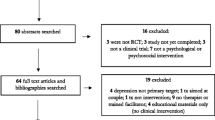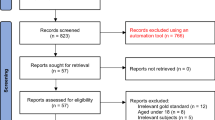Abstract
Purpose
To compare depressiveness scores, both during and after pregnancy, with the delivery mode (DM).
Methods
In a longitudinal, prospective study, standardized questionnaires for the Edinburgh Postnatal Depression Scale were presented to 1,100 women and used to assess the presence and severity of depressiveness at three time points: prenatal, from the 30th gestational week (Q1); 48–72 h postnatal (Q2); and 6–8 months postnatal (Q3). The patients were divided into four groups relative to DM: spontaneous delivery, primary cesarean section (CS), secondary CS, and assisted vaginal delivery. The final number of participating women with both delivery mode and depression information for all three time points was 753.
Results
There was a significant difference of the mean EPDS values between the spontaneous delivery and primary CS groups (P = 0.04) at Q1 (5.1 vs. 6.3). None of the other comparisons was significant. Significant differences relative to DM were seen at Q2 (P < 0.0001), but there were no significant differences between the patient groups at Q3 (P = 0.54).
Conclusions
DM only showed coherence with the extent of depression briefly during the peripartal period. A relationship was found between depressiveness during pregnancy and DM, with higher depressiveness scores in the group of patients undergoing primary CS. This should be taken into account when patients requesting an elective cesarean section are being counseled.

Similar content being viewed by others
References
Ballard CG, Davis R, Cullen PC, Mohan RN, Dean C (1994) Prevalence of postnatal psychiatric morbidity in mothers and fathers. Br J Psychiatry 164:782–788
Bergant A, Nguyen T, Moser R, Ulmer H (1998) Prevalence of depressive disorders in early puerperium. Gynakol Geburtshilfliche Rundsch 38:232–237
Brockington I (2004) Postpartum psychiatric disorders. Lancet 363:303–310
Ho SM, Heh SS, Jevitt CM et al (2009) Effectiveness of a discharge education program in reducing the severity of postpartum depression: a randomized controlled evaluation study. Patient Educ Couns 77:68–71
Gawlik S, Reck C, Kuelkens S et al (2010) Prenatal depression and anxiety—what is important for the obstetrician? Geburtsh Frauenheilk 70:361–368
Ryba MM, Hopko DR (2012) Gender differences in depression: assessing mediational effects of overt behaviors and environmental reward through daily diary monitoring. Depress Res Treat 2012:865
Angst J, Gamma A, Gastpar M et al (2002) Gender differences in depression. Epidemiological findings from the European DEPRES I and II studies. Eur Arch Psychiatry Clin Neurosci 252:201–209
Lanczik M, Brockington IF (1999) Postpartum dysphoric syndrome. Psychopathology, diagnosis and etiology. Fortschr Neurol Psychiatr 67:60–67
Ross LE, McLean LM (2006) Anxiety disorders during pregnancy and the postpartum period: a systematic review. J Clin Psychiatry 67:1285–1298
O’Hara MW, Gorman LL, Wright EJ (1996) Description and evaluation of the Iowa Depression Awareness, Recognition, and Treatment Program. Am J Psychiatry 153:645–649
Gaynes BN, Gavin N, Meltzer-Brody S et al (2005) Perinatal depression: prevalence, screening accuracy, and screening outcomes. Evid Rep Technol Assess (Summ) 119:1–8
Doucet S, Dennis CL, Letourneau N, Blackmore ER (2009) Differentiation and clinical implications of postpartum depression and postpartum psychosis. J Obstet Gynecol Neonatal Nurs 38:269–279
Kumar R (1994) Postnatal mental illness: a transcultural perspective. Soc Psychiatry Psychiatr Epidemiol 29:250–264
Miller RL, Pallant JF, Negri LM (2006) Anxiety and stress in the postpartum: is there more to postnatal distress than depression? BMC Psychiatry 6:12–23
Nonacs R, Cohen LS (1998) Postpartum mood disorders: diagnosis and treatment guidelines. J Clin Psychiatry 59(Suppl 2):34–40
Nielsen Forman D, Videbech P, Hedegaard M, Dalby Salvig J, Secher NJ (2000) Postpartum depression: identification of women at risk. BJOG 107:1210–1217
Dennis CL (2004) Can we identify mothers at risk for postpartum depression in the immediate postpartum period using the Edinburgh Postnatal Depression Scale? J Affect Disord 78:163–169
Roux G, Anderson C, Roan C (2002) Postpartum depression, marital dysfunction, and infant outcome: a longitudinal study. J Perinat Educ 11:25–36
Weinberg MK, Tronick EZ (1998) The impact of maternal psychiatric illness on infant development. J Clin Psychiatry 59(Suppl 2):53–61
Murray L, Cooper PJ, Wilson A, Romaniuk H (2003) Controlled trial of the short- and long-term effect of psychological treatment of post-partum depression: 2. Impact on the mother-child relationship and child outcome. Br J Psychiatry 182:420–427
Poobalan AS, Aucott LS, Ross L et al (2007) Effects of treating postnatal depression on mother–infant interaction and child development: systematic review. Br J Psychiatry 191:378–386
Turner KM, Chew-Graham C, Folkes L, Sharp D (2010) Women’s experiences of health visitor delivered listening visits as a treatment for postnatal depression: a qualitative study. Patient Educ Couns 78:234–239
Csatordai S, Kozinszky Z, Devosa I et al (2007) Obstetric and sociodemographic risk of vulnerability to postnatal depression. Patient Educ Couns 67:84–92
Beck CT (2002) Revision of the postpartum depression predictors inventory. J Obstet Gynecol Neonatal Nurs 31:394–402
Beck CT (2001) Predictors of postpartum depression: an update. Nurs Res 50:275–285
Mautner E, Egger JW, Daghofer F, Lang U, Greimel E (2010) Medical and psychosocial risk factors for depression and decreased quality of life in pregnancy and postpartum. Geburtshilfe Frauenheilkd 70:298–303
Carter FA, Frampton CM, Mulder RT (2006) Cesarean section and postpartum depression: a review of the evidence examining the link. Psychosom Med 68:321–330
Evans J, Heron J, Francomb H, Oke S, Golding J (2001) Cohort study of depressed mood during pregnancy and after childbirth. BMJ 323:257–260
Josefsson A, Berg G, Nordin C, Sydsjo G (2001) Prevalence of depressive symptoms in late pregnancy and postpartum. Acta Obstet Gynecol Scand 80:251–255
Reulbach U, Bleich S, Knorr J et al (2009) Pre-, peri- and postpartal depression. Fortschr Neurol Psychiatr 77:708–713
Nagata M, Nagai Y, Sobajima H et al (2000) Maternity blues and attachment to children in mothers of full-term normal infants. Acta Psychiatr Scand 101:209–217
Okano T, Nomura J (1992) Endocrine study of the maternity blues. Prog Neuropsychopharmacol Biol Psychiatry 16:921–932
Mitchell AM, Mittelstaedt ME, Schott-Baer D (2006) Postpartum depression: the reliability of telephone screening. MCN Am J Matern Child Nurs 31:382–387
Bergant AM, Nguyen T, Heim K, Ulmer H, Dapunt O (1998) German language version and validation of the Edinburgh postnatal depression scale. Dtsch Med Wochenschr 123:35–40
Cox JL, Holden JM, Sagovsky R (1987) Detection of postnatal depression. Development of the 10-item Edinburgh Postnatal Depression Scale. Br J Psychiatry 150:782–786
Kottmel A, Hoesli I, Traub R et al (2012) Maternal request: a reason for rising rates of cesarean section? Arch Gynecol Obstet 286:93–98
Edwards DR, Porter SA, Stein GS (1994) A pilot study of postnatal depression following caesarean section using two retrospective self-rating instruments. J Psychosom Res 38:111–117
Patel RR, Murphy DJ, Peters TJ (2005) Operative delivery and postnatal depression: a cohort study. BMJ 330:879
Johnstone SJ, Boyce PM, Hickey AR, Morris-Yatees AD, Harris MG (2001) Obstetric risk factors for postnatal depression in urban and rural community samples. Aust N Z J Psychiatry 35:69–74
Goecke TW, Voigt F, Faschingbauer F et al. (2012) The association of prenatal attachment and perinatal factors with pre- and postpartum depression in first-time mothers. Arch Gynecol Obstet
Kringeland T, Daltveit AK, Moller A (2010) How does preference for natural childbirth relate to the actual mode of delivery? A population-based cohort study from Norway. Birth 37:21–27
Izard CE, Libero DZ, Putnam P, Haynes OM (1993) Stability of emotion experiences and their relations to traits of personality. J Pers Soc Psychol 64:847–860
Strand BH, Dalgard OS, Tambs K, Rognerud M (2003) Measuring the mental health status of the Norwegian population: a comparison of the instruments SCL-25, SCL-10, SCL-5 and MHI-5 (SF-36). Nord J Psychiatry 57:113–118
Mancuso A, De Vivo A, Fanara G et al (2006) Women’s preference on mode of delivery in Southern Italy. Acta Obstet Gynecol Scand 85:694–699
Hamilton M (1959) The assessment of anxiety states by rating. Br J Med Psychol 32:50–55
Montgomery SA, Asberg M (1979) A new depression scale designed to be sensitive to change. Br J Psychiatry 134:382–389
Wu J, Viguera A, Riley L, Cohen L, Ecker J (2002) Mood disturbance in pregnancy and the mode of delivery. Am J Obstet Gynecol 187:864–867
Sit DK, Wisner KL (2009) Identification of postpartum depression. Clin Obstet Gynecol 52:456–468
Navarro P, Ascaso C, Garcia-Esteve L et al (2007) Postnatal psychiatric morbidity: a validation study of the GHQ-12 and the EPDS as screening tools. Gen Hosp Psychiatry 29:1–7
Acknowledgments
The authors are grateful to the postgraduate doctoral candidates who took part in conducting FRAMES for collecting the data (Sandra Ammon, Karina Dietze, Kirstin Meier, Susan Pau, Diana Thiessen, and Franziska Wörlein), and to the midwives at the Perinatal Center for Franconia for their assistance in recruiting patients for inclusion in the study. We thank Udo Reulbach for his support in the data management and Franziska Voigt for the support in the patient recruitment.
Conflict of interest
The authors hereby declare that there are no financial or personal relationships with other persons or organizations that might inappropriately influence their research.
Author information
Authors and Affiliations
Corresponding author
Additional information
City in which the study was conducted: Erlangen (Federal State: Bavaria, Country: Germany).
Rights and permissions
About this article
Cite this article
Rauh, C., Beetz, A., Burger, P. et al. Delivery mode and the course of pre- and postpartum depression. Arch Gynecol Obstet 286, 1407–1412 (2012). https://doi.org/10.1007/s00404-012-2470-8
Received:
Accepted:
Published:
Issue Date:
DOI: https://doi.org/10.1007/s00404-012-2470-8




